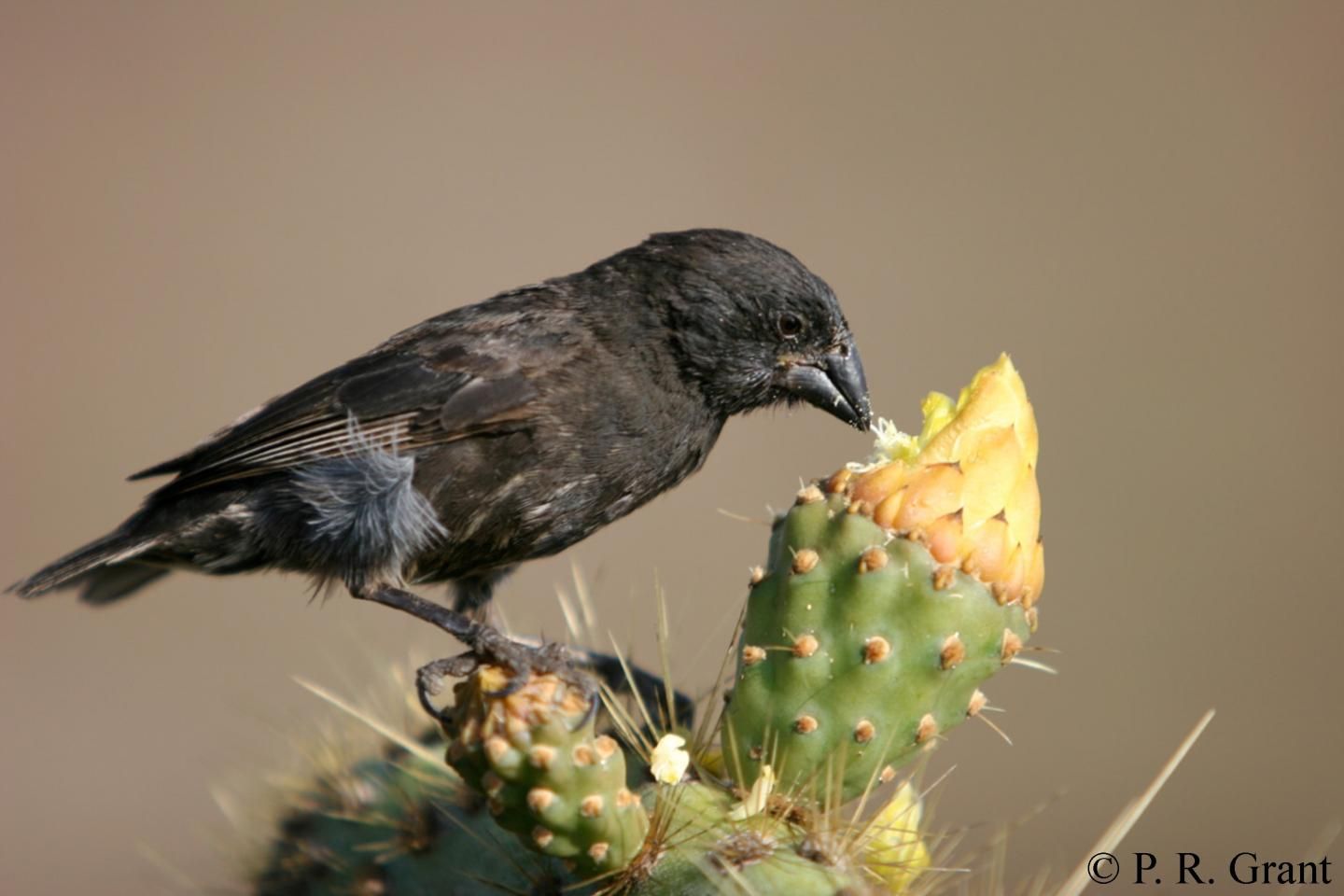
Galápagos finches, also known as Darwin's finches, are famous for their contribution to biological science. Charles Darwin observed and collected the animals while visiting the islands aboard the HMS Beagle in the 1830s, and later theorized in On the Origin of the Species that slight changes in a common ancestor of the finches allowed the animals to diverge and compete for different resources, thus evolving differently shaped beaks to allow them to eat specific types of foods, like seeds or insects. It was one of the key drivers in the development of Darwin's theory of evolution.
New research shows that Galápagos finches might still have more to teach us about evolution. We usually think of it as a slow, gradual process. But, it turns out, evolution sometimes happens quite quickly—even in a single generation.
In a study published April 21 in the journal Science, researchers show that by having a smaller beak, medium ground finches are better able to eat tiny seeds, and thus compete more effectively with large finches that focus on bigger seeds and leave the little ones alone. But more importantly, the scientists found that this anatomical change was driven by a single gene, known as HMGA2.

This shift was caused by a drought in 2005 to 2006, which intensified competition amongst different finch species. Birds with smaller beaks were more likely to survive, and today, finch populations have smaller beaks than before the drought.
The scientists, including Peter and Rosemary Grant at Princeton University, found that 61 percent of the birds that survived that drought have genes coding for a smaller beak, whereas only 37 percent of those that died had the same genotype.
In the world of evolutionary biology, that's massive. The contribution of this gene to an individual's chance of survival (which can be quantified using a measure known as the selection coefficient) is "clearly one of the highest yet recorded for an individual gene in nature," says Leif Andersson, a researcher at Uppsala University in Sweden and study lead author.
The idea that genes drive a species' ability to adapt to change and compete with other organisms has been well-established, but rarely has there been such a clear example of this phenomena in action in the real world.
The gene HMGA2 affects body size in humans, horses, dogs and other animals, but how it works is a mystery, other than the fact that it produces a protein that affects how other genes behave. "It's a really interesting gene for which more research is needed," Andersson says.
Uncommon Knowledge
Newsweek is committed to challenging conventional wisdom and finding connections in the search for common ground.
Newsweek is committed to challenging conventional wisdom and finding connections in the search for common ground.
About the writer
Douglas Main is a journalist who lives in New York City and whose writing has appeared in the New York ... Read more





